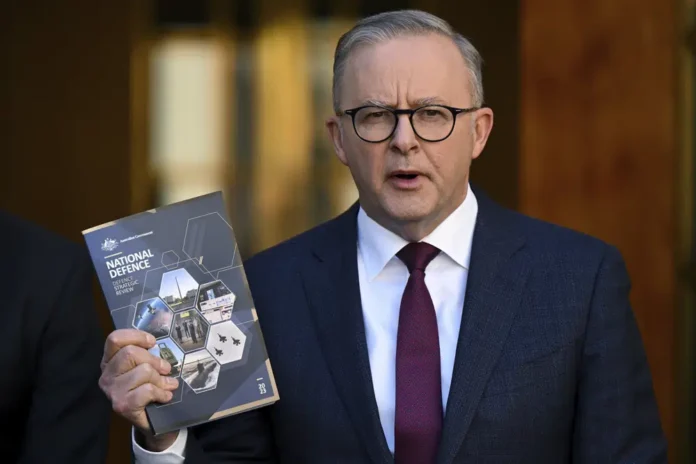CANBERRA (AP) – Australia will spend more money on defense, build its own munitions and build its ability to strike long-range targets like China, according to a government commissioned report released on Monday. need to develop. It announced on Monday a military buildup that threatened security in the region.
Defense Strategic Review backs the so-called AUKUS partnership between Australia, the US and the UK, which announced in March an agreement to create an Australian fleet of eight submarines with US nuclear technology.
Prime Minister Anthony Albanese said the review was commissioned by the government to assess whether Australia has the defense capabilities, posture and readiness necessary to defend itself in the current strategic environment.
“We endorse the strategic direction and key findings of the review, which will strengthen our national security and ensure our readiness for future challenges,” Albanese said.
He said the review was the most significant in Australia since World War II and was comprehensive in scope. “In a world where national security challenges are constantly evolving, it shows that old assumptions cannot be relied upon,” Albanese said.
The public version of the classified review found the Australian government spending more than his 2% of current GDP on national defense, improving the Australian Defense Force’s ability to strike targets at greater range and with precision, and manufacturing munitions domestically.
Other recommendations include improving the capabilities of forces operating from bases in northern Australia and deepening defense partnerships with key Indo-Pacific powers, including India and Japan.
China’s military buildup is “the largest and most ambitious of any country to date” since World War II, according to the magazine. It said it would “be done without transparency or reassurance of China’s strategic intentions for the Indo-Pacific region.” According to a report authored by former Australian Defense Secretary Angus Houston and former Defense Secretary Steven Smith, the strategic situation under review was “fundamentally different” from the past.
The United States, Australia’s key defense treaty partner, said it was “no longer the unipolar leader in the Indo-Pacific”, a region where great power strategic competition has revived.
“As a result, for the first time in 80 years, we need to go back to basics and adopt a core principles approach to how we manage and avoid the highest levels of strategic risk that we face as nations today.
A large-scale conflict could erupt in the region that directly threatens our national interests,” the review said.
The government immediately plans to defer or abandon A$7.8 billion (US$5.2 billion) in defense spending to reflect new priorities.
Defense Industry Secretary Pat Conroy said orders for infantry fighting vehicles have been cut from 450 to 129 as part of new priorities. The savings from these vehicles and the cancellation of the 2nd Regiment of self-propelled howitzers will fund accelerated acquisition of the US HIMARS missile system, which has proven effective in the Ukraine war.
According to Conroy, the maximum range of the Army’s weapons has been increased from his 40 kilometers (25 miles) to more than 300 kilometers (185 miles) for him, and the acquisition of precision-attack weapons will increase him to more than 500 kilometers (310 miles).
“This is to give the Australian Army the firepower and mobility it needs to face whatever it may face in the future,” Conroy said.
When asked about Australia’s new military focus, China’s foreign ministry spokesman Mao Ning said Beijing’s military buildup policy was “defensive in nature”.
Thursday, April 25, 2024
More
POPULAR POSTS
© London Post, All Rights Reserved by Independent Media Group UK Limited.






